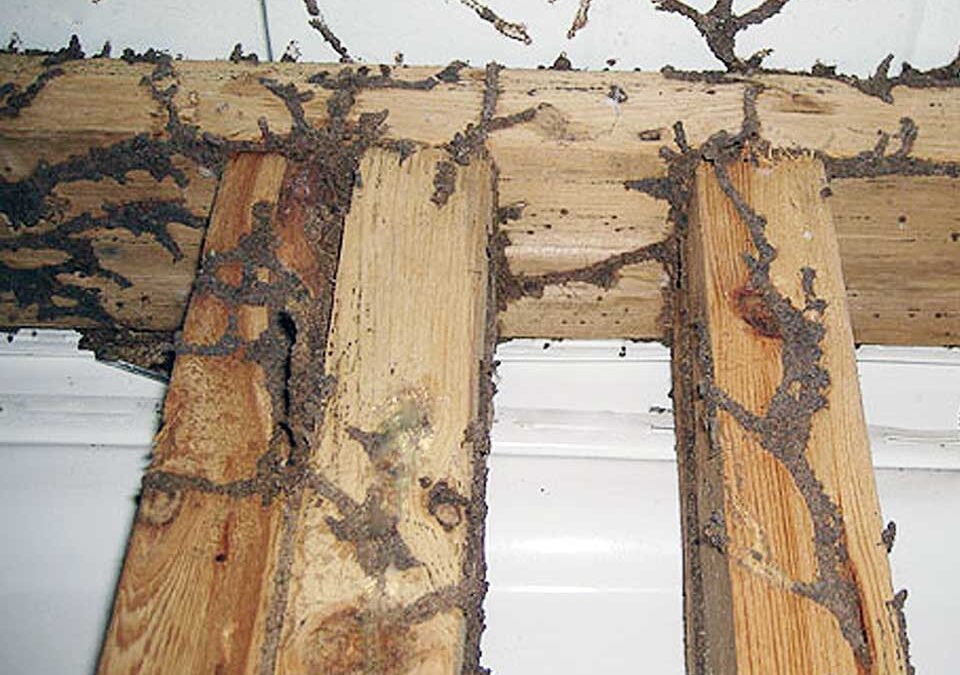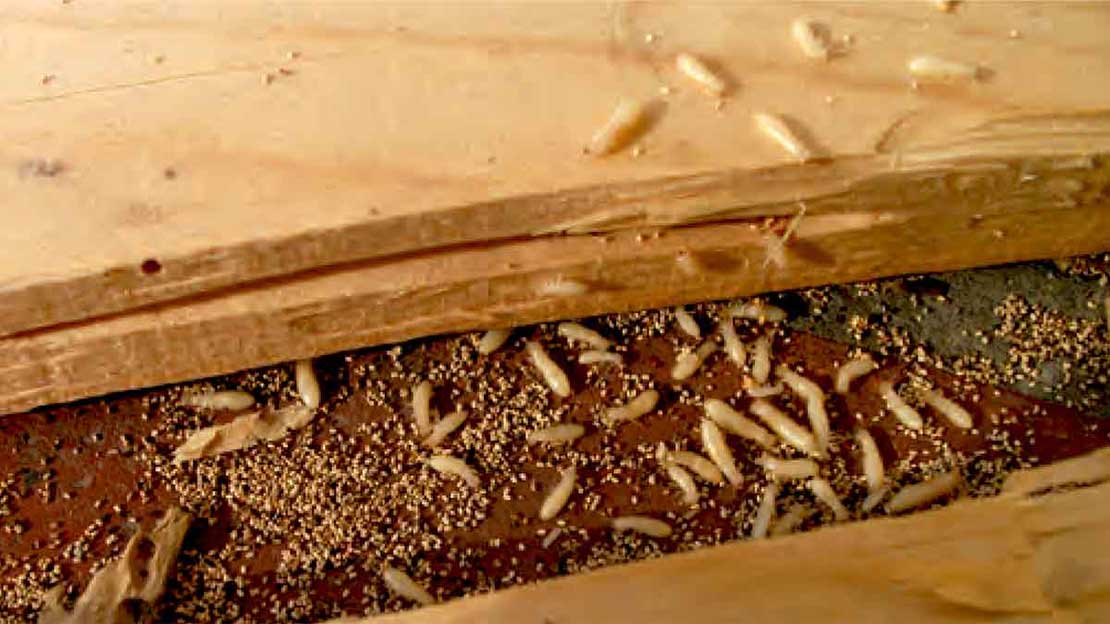Termite Treatments in Florida
Exterminator Services for Clermont, Groveland, Mascotte, Oakland, and Montverde
Florida’s mild winters, steady warmth, and high humidity nurture not only palm trees and lush landscapes but also pests—most notably termites. These wood-consuming insects can quietly eat through structural beams, flooring, or furniture from the inside out, often remaining hidden until severe damage emerges. In Clermont, along with Groveland, Mascotte, Oakland, and Montverde, ignoring early signs of termites can escalate from minor wood destruction to extensive and costly repairs. This service page clarifies why termites flourish so well in Florida, how to detect an infestation early, and why contacting a professional termite exterminator for comprehensive termite treatments is your strongest defense. By taking preemptive measures or acting swiftly at the first suspicious evidence, you save your property from internal weakening, occupant anxiety, and the financial burden of advanced termite remediation.
Why Termites Thrive in Florida

- Year-Round Warmth and Mild Winters
In cold regions, termites face forced dormancy or significantly slowed activity during prolonged freezing spells. Florida’s winter rarely drops to sustained freezing temperatures, letting termites feed and multiply throughout the calendar. Indoors, heating or air conditioning preserves comfortable temperatures year-round, ensuring no seasonal lull to disrupt termite breeding. - High Humidity and Frequent Rain
Many termite species require moisture to build mud tubes or nest in damp wood. Florida’s natural humidity, along with frequent rain, keeps soils moist and fosters conditions for subterranean or dampwood termites. Even minor leaks in roofs or poorly ventilated crawl spaces sustain the damp wood these insects favor. - Abundant Wooden Structures
From older homes with wooden frames to new developments incorporating wood in beams, siding, or trim, Florida properties often contain the cellulose termites crave. In communities like Clermont or Groveland, direct soil-wood contact around foundations or unaddressed rotting sections invite termite foraging. - Minimal Seasonal Dormancy
Termites in northern states endure cold-induced breaks, limiting reproduction for months. In southwestern Florida, mild winter ensures reproduction rarely halts. A small termite presence can grow into a substantial colony rapidly if not caught early, quietly feasting behind walls or under floors. - Frequent Movement of Goods and People
In areas experiencing occupant or shipping transitions—like Mascotte, Oakland, or Montverde—termites may spread via infested wooden crates, secondhand furniture, or construction supplies. Once they sense stable conditions in a new property, they settle and expand, ultimately jeopardizing structural integrity.
Signs of a Termite Infestation
- Mud Tubes
Subterranean termites create pencil-thin mud tubes along foundations, inside crawl spaces, or across basement walls to maintain moisture while traveling from their underground nests to wooden feeding areas. If you spot these earthen tunnels, it strongly indicates active termite activity. - Discarded Wings
Winged termites (swarmers) leave their colonies to find new nesting sites, shedding wings upon landing. Discovering piles of translucent wings near window sills, door frames, or light fixtures hints at an established colony looking to expand. - Hollow-Sounding or Damaged Wood
Tapping on suspicious beams or floors that yield a hollow noise often reveals interior termite galleries. Sometimes a thin outer layer remains intact while termites eat the core, making wood appear normal until it eventually collapses or caves in. - Frass (Droppings)
Drywood termites produce six-sided pellet-like droppings known as frass. These typically accumulate beneath infested wooden items—like windows, furniture, or baseboards—appearing as small, uniform pellets resembling sawdust or fine grains of sand. - Swarmer Sightings
During warmer months, you may witness swarms of winged termites gathering near light sources after rain. Spotting these indoors means a mature colony is likely present. Quick occupant response prevents them from establishing multiple nests around the structure.
Consequences of Ignoring Termites
- Structural Degradation
Undetected termites devour wood from the inside, undermining beams and support columns. Floors might sag, doors jam, or ceilings crack once vital load-bearing elements become compromised. Early detection and treatment spare you from extensive rebuilding. - High Repair Costs
The deeper termites eat, the more expensive and labor-intensive the fixes become—often requiring significant reconstruction of wooden frames, subfloors, or decorative wood elements. Reacting at the first hint of infestation limits the financial toll. - Reduced Property Value
A property with known termite damage or uncertain termite status may deter prospective buyers or stall real estate transactions. Many lenders or buyers demand a termite clearance report before finalizing deals, so ignoring a potential infestation complicates sales or acquisitions. - Continuous Stress
Knowing insects quietly chew through beams can weigh on occupant minds. Thorough termite removal resolves this uncertainty, letting families and businesses regain confidence in their building’s structural safety.

Why Seek Professional Termite Treatments
- Comprehensive Inspection
A termite exterminator probes attics, basements, crawl spaces, or exterior foundations for signs—like mud tubes or frass—that an untrained eye might miss. Identifying the termite species (subterranean, drywood, or dampwood) tailors the solutions needed, such as focusing on soil treatments or localized injections. - Tailored Methods for Thorough Elimination
Professionals employ multiple strategies—like soil barriers, baiting systems, or fumigation—depending on how widespread the problem is and whether subterranean or drywood termites are present. Spot treatments or foam injections can resolve a localized outbreak; advanced infestations might demand more robust approaches. - Preventive Repairs and Moisture Control
Exterminators often advise occupant-led repairs—like sealing foundation cracks, fixing roof leaks, or improving ventilation in damp crawl spaces. Denying termites wood-to-soil contact or rotting beams starves them of easy feeding sites, blocking recurrence after removal. - Precision in Chemical Use
Over-the-counter sprays can scatter termites deeper into walls or subfloors. Experts place termiticides meticulously, forming an uninterrupted protective barrier in the soil around a structure or injecting chemicals into precise spots so termites contact lethal doses. - Follow-Up and Assurance
Because termite queens can continually lay eggs, verifying the infestation is fully eradicated remains crucial. Scheduling re-checks or occupant-based monitoring (like checking bait stations) ensures no survivors regroup or new colonies emerge unnoticed.
Methods Employed by Termite Exterminators
- Soil Treatments and Trenching
For subterranean termites, digging shallow trenches around the building perimeter and filling them with liquid termiticides blocks termites’ path from soil to wood. Professionals might also drill small holes in concrete to inject termiticide if necessary. This chemical barrier kills or repels foraging termites. - Bait Stations
Bait systems containing slow-acting toxins lure worker termites. They feed on the bait, carrying it back to the nest, eventually killing the colony from within. Regular station checks gauge activity levels and replenish bait as needed, confirming whether the colony collapses over time. - Drywood Termite Approaches
If drywood termites dwell in limited sections of wood, localized spot treatments—like injecting foam or termiticide into the infested beams—may suffice. If multiple rooms or structural areas are compromised, whole-building fumigation might be recommended. Occupants vacate temporarily, allowing lethal gases to saturate hidden termite pockets. - Moisture Control
Termites commonly appear in damp, rotting wood. Fixing roof leaks, boosting attic ventilation, or rerouting AC condensation lines prevents soft, easily consumed wood. Exterminators highlight these repairs to hamper termite re-infestation after treatments. - Follow-Up Checks
Because subterranean colonies can linger unseen or new swarms may appear, scheduling re-checks or using installed bait stations ensures no leftover termite activity. If occupant sightings of swarmers or fresh mud tubes appear, adjusting treatments halts them before fresh damage accumulates.
Coverage Areas: Clermont, Groveland, Mascotte, Oakland, Montverde
Clermont: Known for rolling hills and scenic vistas, Clermont experiences housing expansions that might unearth subterranean termite nests, pushing them toward newly built properties. Prompt occupant or builder vigilance in sealing cracks and using termite barriers preempt bigger outbreaks.
Groveland: A growing suburban-rural blend. If occupant yard maintenance or building upkeep remains minimal, damp wood or direct soil-wood contact fosters termite invasions. Scheduling occupant-based routine checks hamper expansions from farmland edges or older structures.
Mascotte: Seeing new residential communities develop near farmland, termites might move from disturbed soil into fresh foundations. Occupants noticing mud tubes or swarmers near windows should contact professionals swiftly to avoid advanced damage.
Oakland: With older homes and partial occupant presence, Oakland sees termite infiltration if rotting wood or unsealed soil contact remains. Occasional occupant sweeps—like checking baseboards for frass—plus quick professional solutions maintain safe structural conditions.
Montverde: Lakeside living and partial-year residents can leave homes vacant, letting termites feed uninterrupted if occupant checks are rare. Routine caretaker visits or occupant vigilance upon returning ensures no hidden termite expansions behind walls or under floors.

Why Our Termite Treatments Succeed
- Florida-Adaptive Solutions
Because southwestern Florida seldom experiences cold that interrupts termite breeding, our approach merges occupant-driven dryness (fixing leaks, removing rotted wood) with robust chemical or baiting coverage. We disrupt termite feeding corridors, ensuring thorough coverage from ground soil up to attic beams. - Precision and Reduced Exposure
We apply soil termiticides or spot treatments exactly where termites feed or travel—like perimeter trenches, behind known infestation spots. Occupants only need minimal re-entry delays if certain products must dry or vent out, balancing occupant health with lethal termite contact. - Preventive Education
Removing current termite colonies is only half the job. We advise owners on ensuring no wood-to-soil contact, addressing moisture issues, and scheduling occasional checks so new colonies do not slip in. This synergy fosters stable, termite-free results. - Follow-Up Verification
Because colonies can hide deep within walls or under floors, scheduling re-inspections or installing bait stations confirms no survivors or newly arrived termites remain. If occupant sightings continue, additional spot treatments finalize thorough eradication.
Next Steps
Seeing mud tubes along your foundation, discovering frass (tiny droppings) under window frames, or noticing hollow-sounding wood? Contact us to learn more or schedule your service. Our termite exterminator strategies in Clermont, Groveland, Mascotte, Oakland, and Montverde tackle active colonies comprehensively—whether subterranean, drywood, or both. Swift treatment spares you from weeks of anxiety over silent wood destruction, culminating in costly repairs.
By employing solutions—like soil barriers, bait systems, or localized or full-structure fumigation—matched to your infestation type, we secure your building’s frame from destructive termites. Uniting occupant vigilance (like dryness fixes or sealing cracks) with professional coverage ensures no re-infestation takes hold, returning occupant confidence in the structural safety of their property.
Sustaining a Termite-Free Environment
Once termites are removed, occupant diligence prevents new colonies:
- Eliminate Moisture: Repair roof or plumbing leaks, enhance crawl space or attic ventilation, and ensure AC condensate drains away from wooden structures. Termites gravitate to damp wood.
- Soil-Wood Separation: Maintain at least an 18-inch gap between soil and wooden building elements. Using concrete or metal barriers or removing direct soil contact denies subterranean termites easy access.
- Store Wood Properly: Keep firewood, lumber, or scrap piles elevated and distanced from foundation walls. Termites exploring stored wood might transition indoors if adjacent to the building.
- Routine Inspections: Checking corners for new mud tubes, cracks in slab edges, or noticing swarmers after rains helps detect new termite infiltration early. Annual or biannual professional checks are prudent, especially in Florida’s mild climate.
- Address Rot Promptly: Replace rotted or water-damaged wooden components swiftly. Drywood or dampwood termites target compromised wood, expanding if left intact.
By maintaining dryness, limiting direct wood contact, and swiftly responding to suspicious droppings or wings, southwestern Florida homeowners protect their investments from termite damage year-round. Although Florida’s climate fosters near-constant termite activity, occupant awareness plus a robust professional termite control plan ensures your property stands strong and free from hidden wood-devouring insects.
